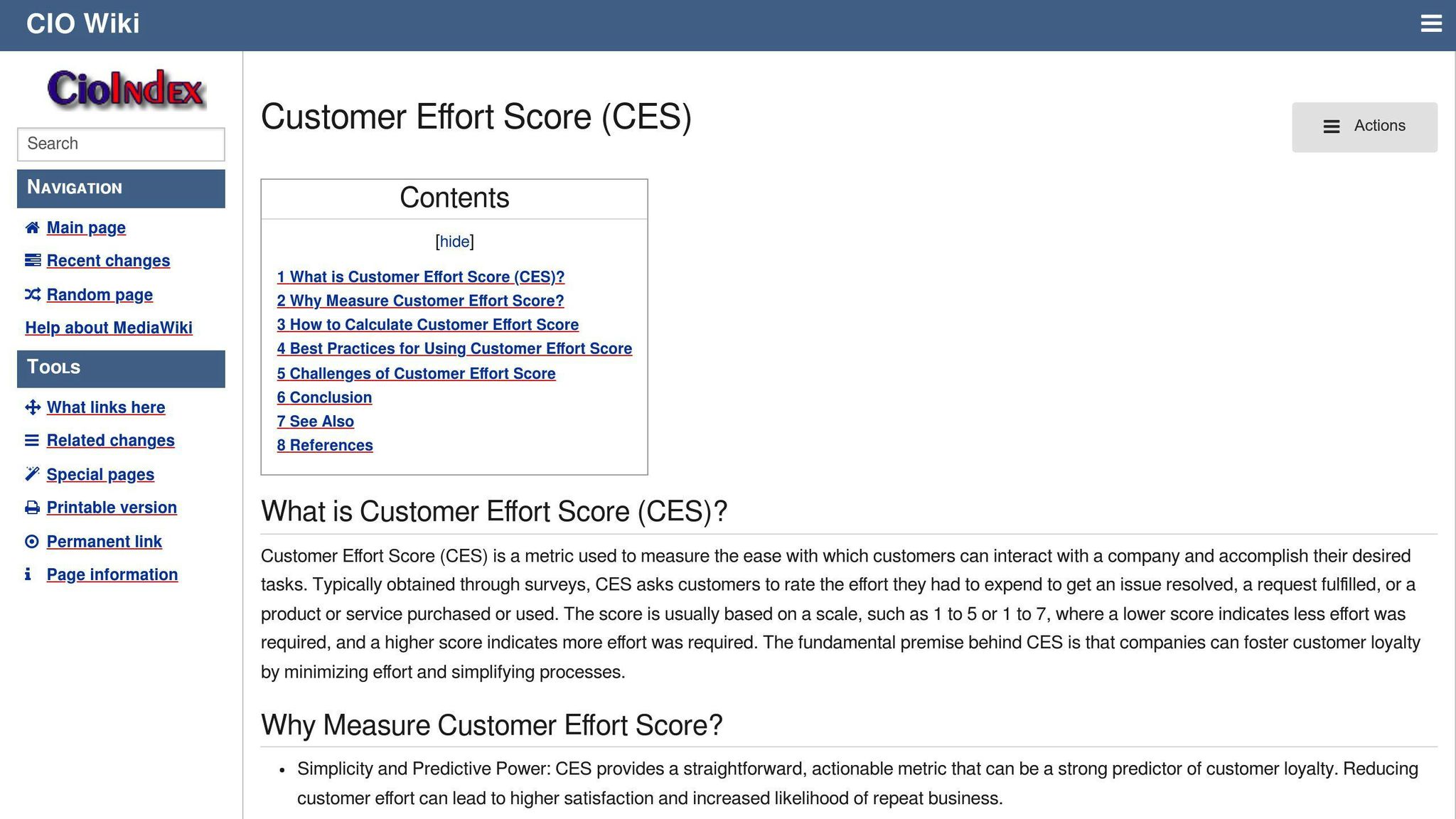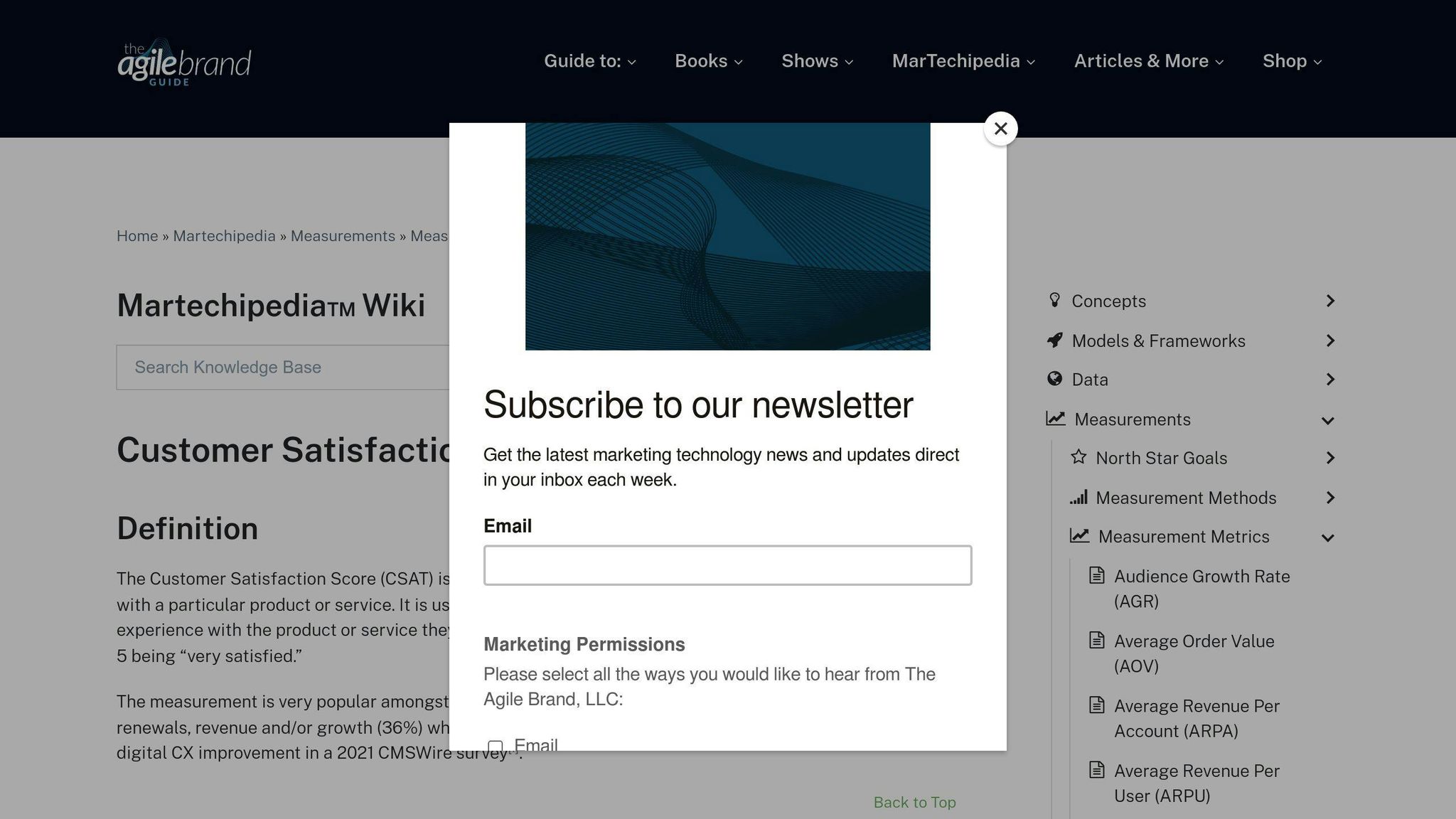
7 Key Metrics to Track AI Customer Service Success
Track the right numbers to prove ROI, keep customers happy, and catch problems before they damage your business.

Written by
Adam Stewart
Key Points
- Track self-service rates to see how much work AI takes off your team's plate
- Monitor sub-2-second response times for better accessibility and customer experience
- Use Customer Effort Score to find and fix friction in your AI conversations
- Measure containment rates to show exactly how much money your AI investment saves
Here's a quick overview of the 7 essential metrics to measure AI customer service effectiveness:
- Self-Service Rate
- First Response Time
- Average Handle Time
- Customer Effort Score (CES)
- Deflection Rate
- AI Accuracy Rate
- Customer Satisfaction Score (CSAT)
These metrics help businesses assess how well their AI tools are performing in customer service. They focus on efficiency, speed, ease of use, and customer satisfaction.
| Metric | What It Measures | Why It's Important |
|---|---|---|
| Self-Service Rate | Customers solving issues independently | Shows AI effectiveness without human intervention |
| First Response Time | Speed of AI responses | Indicates service promptness |
| Average Handle Time | Time to resolve issues | Affects customer satisfaction |
| Customer Effort Score | Ease of getting help | Reveals if AI simplifies problem-solving |
| Deflection Rate | AI-solved issues without human help | Demonstrates AI efficiency |
| AI Accuracy Rate | Correctness of AI responses | Ensures quality of information provided |
| Customer Satisfaction Score | Overall customer happiness | Reflects overall service quality |
By tracking these metrics, companies can improve their AI customer service, making it more accessible and effective for all users, including those with disabilities.
Related video from YouTube
1. Self-Service Rate
What It Is and Why It Matters
The self-service rate shows how many customers can fix their problems without talking to a person. This number is important because it tells us if the AI customer service is helping people on its own.
How It Helps Everyone Use the Service
A high self-service rate is good for making sure everyone can use the service. This includes people with disabilities. For example, people who can't hear well might find it easier to use AI help instead of talking on the phone.
How to Measure It
To check the self-service rate, count how many customers solve their issues using only the AI. Here's a table showing ways to track this:
| Method | What to Count |
|---|---|
| Knowledge Base | Customers who find answers in the AI's information |
| Chatbot | Customers who solve problems by chatting with AI |
| Self-Service Platform | Customers who buy things or finish tasks using AI help |
2. First Response Time
What It Is and Why It's Important
First Response Time (FRT) is how quickly the AI customer service answers a customer's first question. This is key to good service. Fast answers make customers happy and less frustrated.
How It Helps Everyone Use the Service
Quick responses are very helpful for customers with disabilities. For example, deaf or hard-of-hearing customers often use AI chatbots to talk to companies. Fast answers help them solve problems quickly.
How to Measure It
Here are ways to check FRT:
| Method | How It Works |
|---|---|
| Time to Answer | Count the time between a customer's question and the AI's answer |
| Response Speed Patterns | Look at how fast the AI answers over time |
| Speed Goals | Set a time goal (like 1 minute) and see how often the AI meets it |
3. Average Handle Time
What It Is and Why It Matters
Average Handle Time (AHT) shows how long it takes AI customer service to fix a customer's problem. This includes waiting time, talking time, and any extra work needed. AHT is important because it affects how happy customers are with the service.
How It Helps Everyone Use the Service
AHT is important for making sure everyone can use the service easily, including people with disabilities. For example:
- People who use screen readers can get help faster when AHT is low
- Short AHT helps people who get stressed or worried when waiting
How to Measure It
Here are ways to check AHT:
| Method | How It Works |
|---|---|
| Time to Fix | Count the time from when a customer asks for help to when their problem is solved |
| Handle Time Patterns | Look at how long it takes to help customers over time |
| Comparing to Others | See how your AHT compares to other companies in your field |
sbb-itb-ef0082b
4. Customer Effort Score (CES)

What It Is and Why It Matters
The Customer Effort Score (CES) shows how hard or easy it is for customers to get help from AI customer service. This score is important because:
- It tells us if customers can solve problems quickly
- It shows if the AI service is easy to use
- It helps make customers happy with the service
How It Helps Everyone Use the Service
CES is key for making sure all customers, including those with disabilities, can use the service easily. For example:
- People who use screen readers can get help faster when the service is easy to use
- Simple services are better for customers who get stressed with hard-to-use systems
How to Check It
Here are ways to measure CES:
| Method | How It Works |
|---|---|
| Ask Customers | Use a 1-5 scale to ask how easy it was to fix their problem |
| Effort Rating | Let customers say if fixing their issue was "Very Easy", "Easy", "OK", "Hard", or "Very Hard" |
| Compare to Others | See how your CES compares to other companies like yours |
5. Deflection Rate
What It Is and Why It Matters
Deflection rate shows how many customer questions the AI can answer without human help. It's the number of issues the AI solves on its own, compared to all customer questions.
A high deflection rate means:
- The AI is working well
- Customers get help faster
- The company saves money
How It Helps Everyone Use the Service
A good deflection rate makes the service easier for all customers, including those with disabilities. For example:
- People using screen readers can get quick answers from AI chatbots
- Customers who find it hard to use phones can solve problems without calling
How to Check It
Here are ways to measure deflection rate:
| Method | What to Do |
|---|---|
| Count Human Help | See how many times customers need a real person after using AI |
| Check AI Answers | Count how often the AI solves problems by itself |
| Look at Other Companies | See how your AI compares to others in your field |
A high deflection rate means your AI is doing a good job helping customers quickly and easily.
6. AI Accuracy Rate
What It Is and Why It Matters
AI accuracy rate shows how often the AI customer service gives correct answers. This is important because:
- It affects how good the service is
- It helps customers get the right information
- It makes customers happier with the service
How It Helps Everyone Use the Service
Good AI accuracy is extra important for customers with disabilities. For example:
- Blind people using screen readers can find info faster
- People with hearing problems can trust written AI answers
How to Check It
Here are ways to measure AI accuracy:
| Method | How It Works |
|---|---|
| Check by Hand | Look at some AI answers to see if they're right |
| Use Computer Tests | Make fake customer questions to test the AI |
| Ask Customers | Use surveys to see if customers think the AI gives good answers |
Checking AI accuracy helps make sure the service works well for everyone.
7. Customer Satisfaction Score (CSAT)

What It Is and Why It Matters
The Customer Satisfaction Score (CSAT) shows how happy customers are with AI customer service. Companies ask customers to rate their experience, usually from "Very Unhappy" to "Very Happy". CSAT helps businesses:
- See if their customer service is working well
- Find ways to make it better
How It Helps Everyone Use the Service
A good CSAT score means:
- Customers like the service and might keep using it
- The service is easy for everyone to use, including people with disabilities
A low score might mean customers are having trouble, which could make them stop using the service.
How to Check It
Here are ways to measure CSAT:
| Method | How It Works |
|---|---|
| Ask Customers | Use a rating scale from "Very Unhappy" to "Very Happy" |
| Get Comments | Collect feedback through email, social media, or phone |
| Look at Chats | Check how customers talk with the AI to find problems |
Conclusion
This article looked at seven ways to check how well AI customer service is working:
- Self-Service Rate
- First Response Time
- Average Handle Time
- Customer Effort Score (CES)
- Deflection Rate
- AI Accuracy Rate
- Customer Satisfaction Score (CSAT)
By checking these things, companies can see how good their AI customer service is. They can find what needs to be fixed and make smart choices to help customers better.
It's good to look at all these things together. For example, if many customers can help themselves (high Self-Service Rate), but they're not happy (low CSAT), there might still be problems to fix.
As AI gets better, we might need new ways to check how well it's working. Here are some ideas:
| Future Check | What It Means |
|---|---|
| How well AI talks | Can AI understand and answer customers correctly? |
| How AI handles feelings | Can AI spot customer emotions and be nice? |
| Using AI with new tech | How well does AI work with things like virtual reality? |
| Working with smart devices | Can AI connect with things like smart home gadgets to help customers? |
The most important thing is to keep watching how AI helps customers and change things when needed. This way, companies can make sure their AI customer service keeps working well and helps their business grow.
Summarize with AI
Related Posts
AI Customer Service ROI: Measuring Real Impact
Explore how AI in customer service can significantly enhance ROI through cost savings, improved experiences, and key strategies for measuring real impact.
5 Key Metrics to Measure AI Customer Service Success
Discover the 5 key metrics to measure AI customer service success, including ARR, FCR, CSAT, AHT, and CES. Track these metrics to enhance the overall customer experience.
5 Customer Service KPIs AI Improves
Discover how AI enhances customer service efficiency by improving key KPIs like response times, issue resolution, and cost management for superior customer experiences.
AI-Powered Call Center QA: Metrics & Best Practices
Learn about AI-powered call center QA, metrics, best practices, and the future of AI in customer service. Explore key QA metrics, automated call scoring, sentiment analysis, and more.
